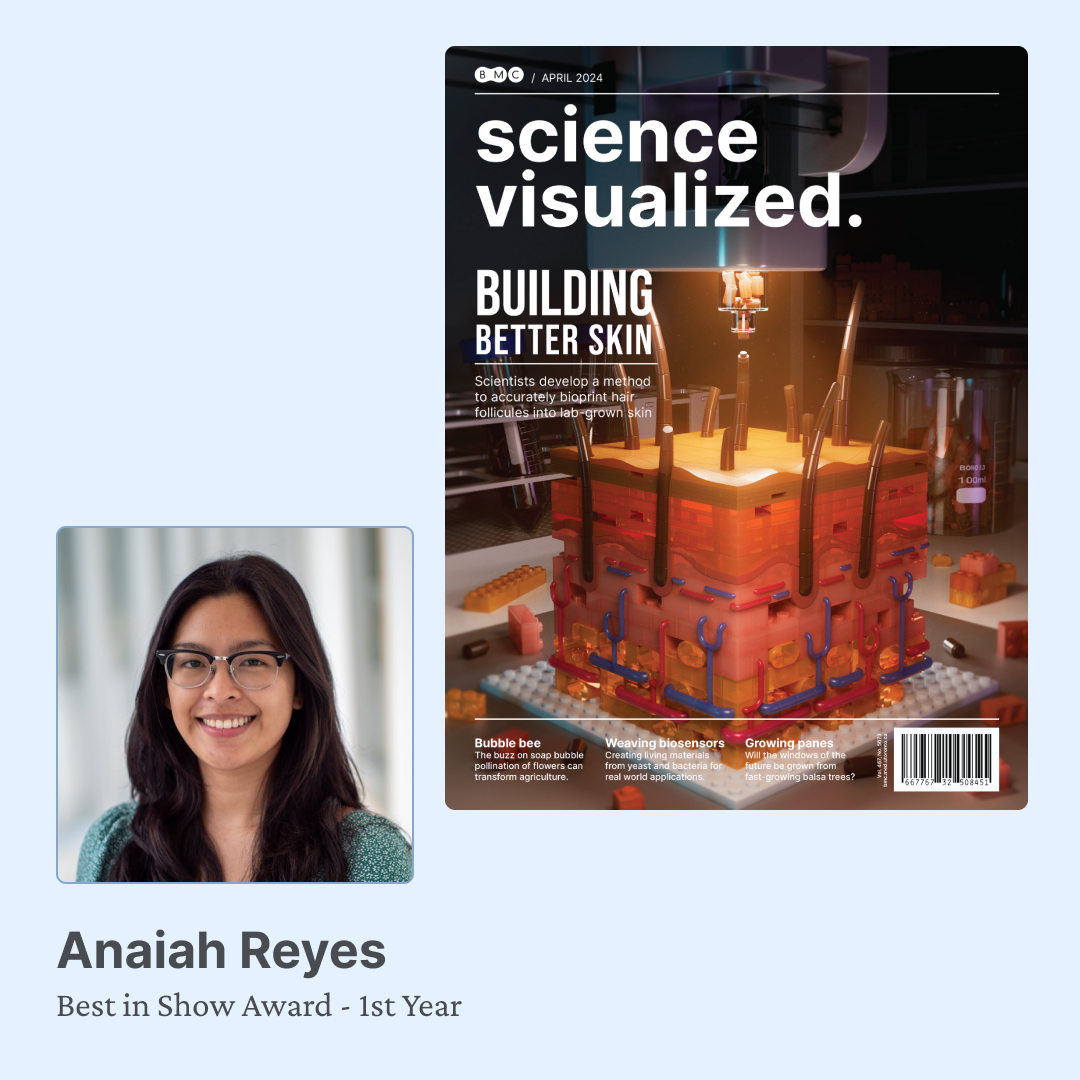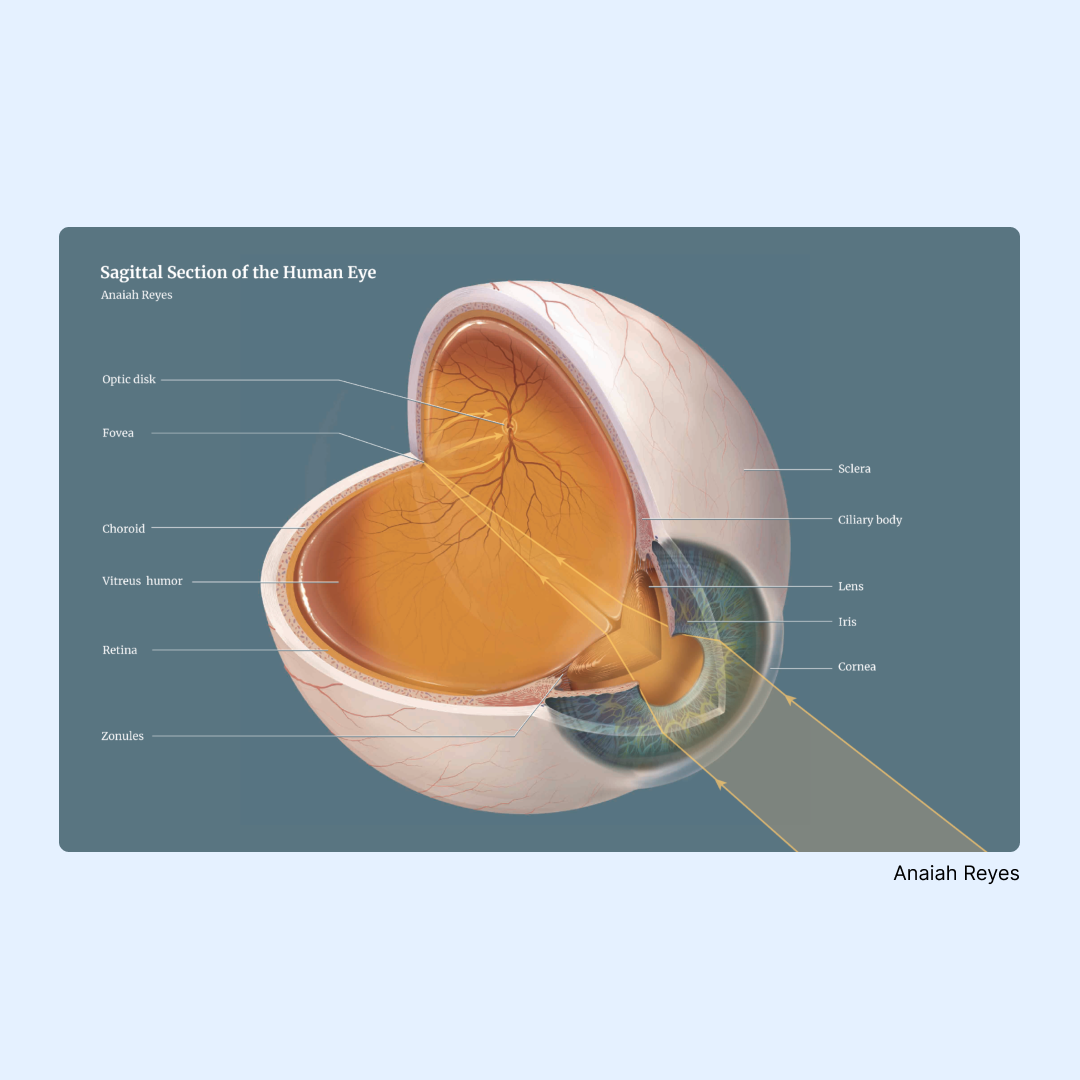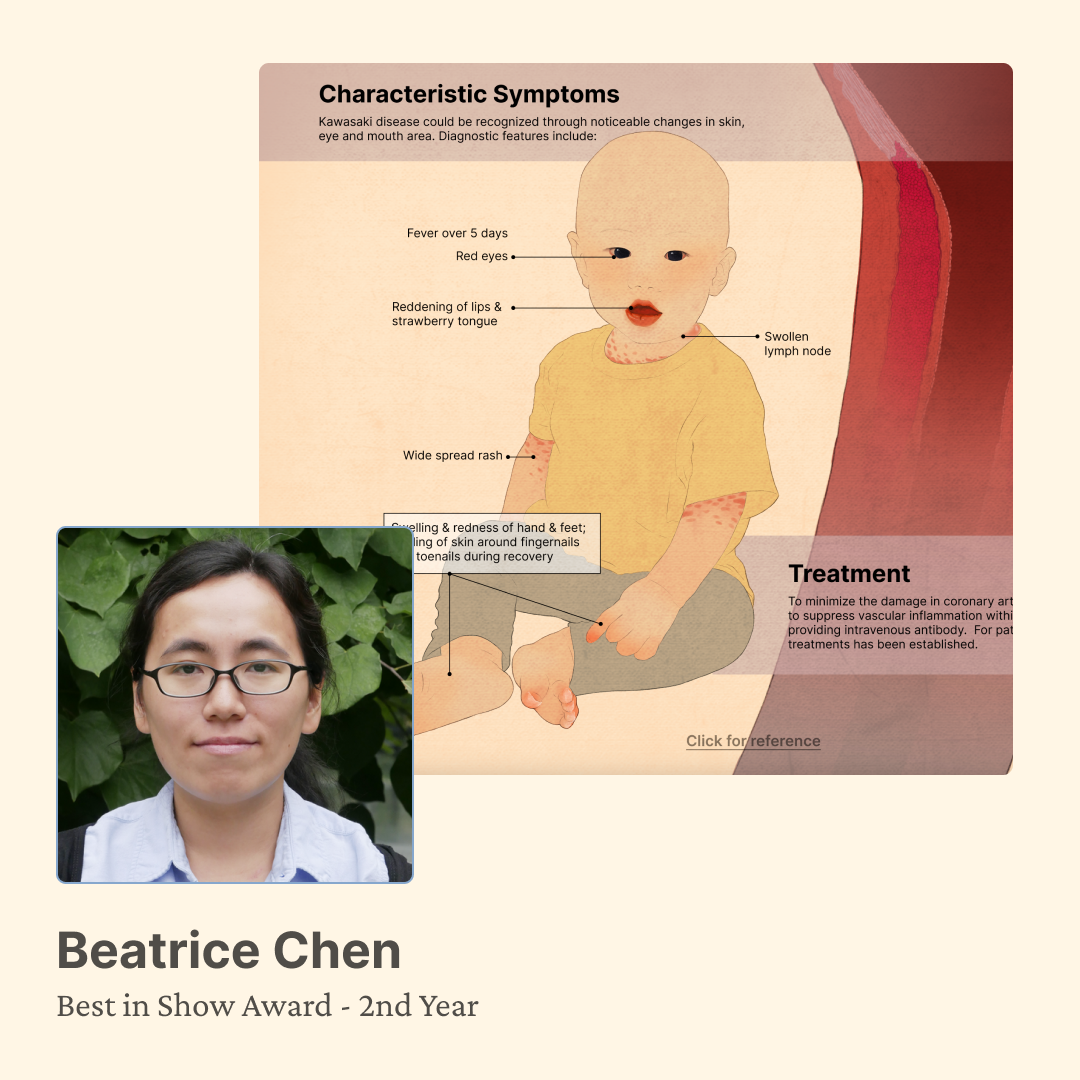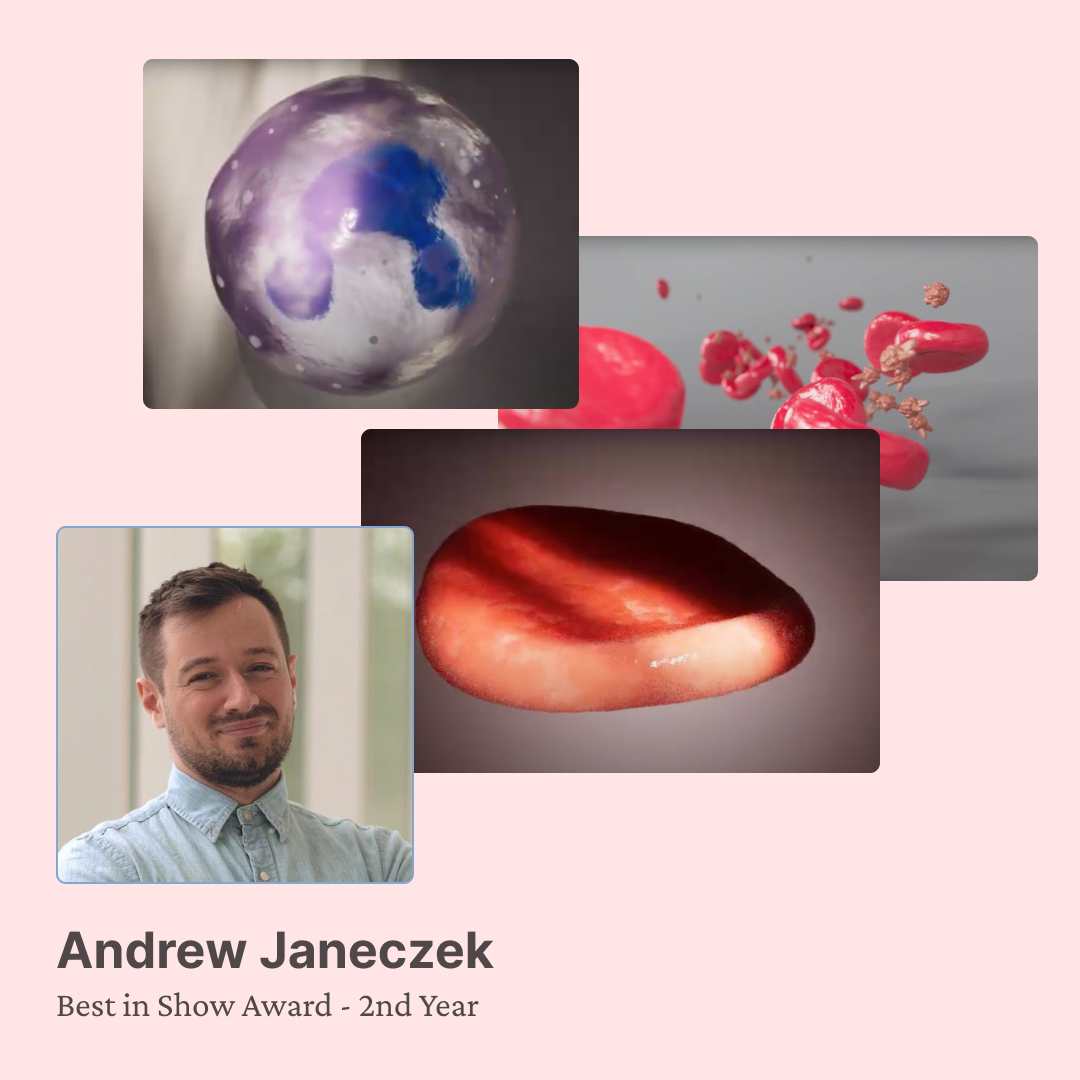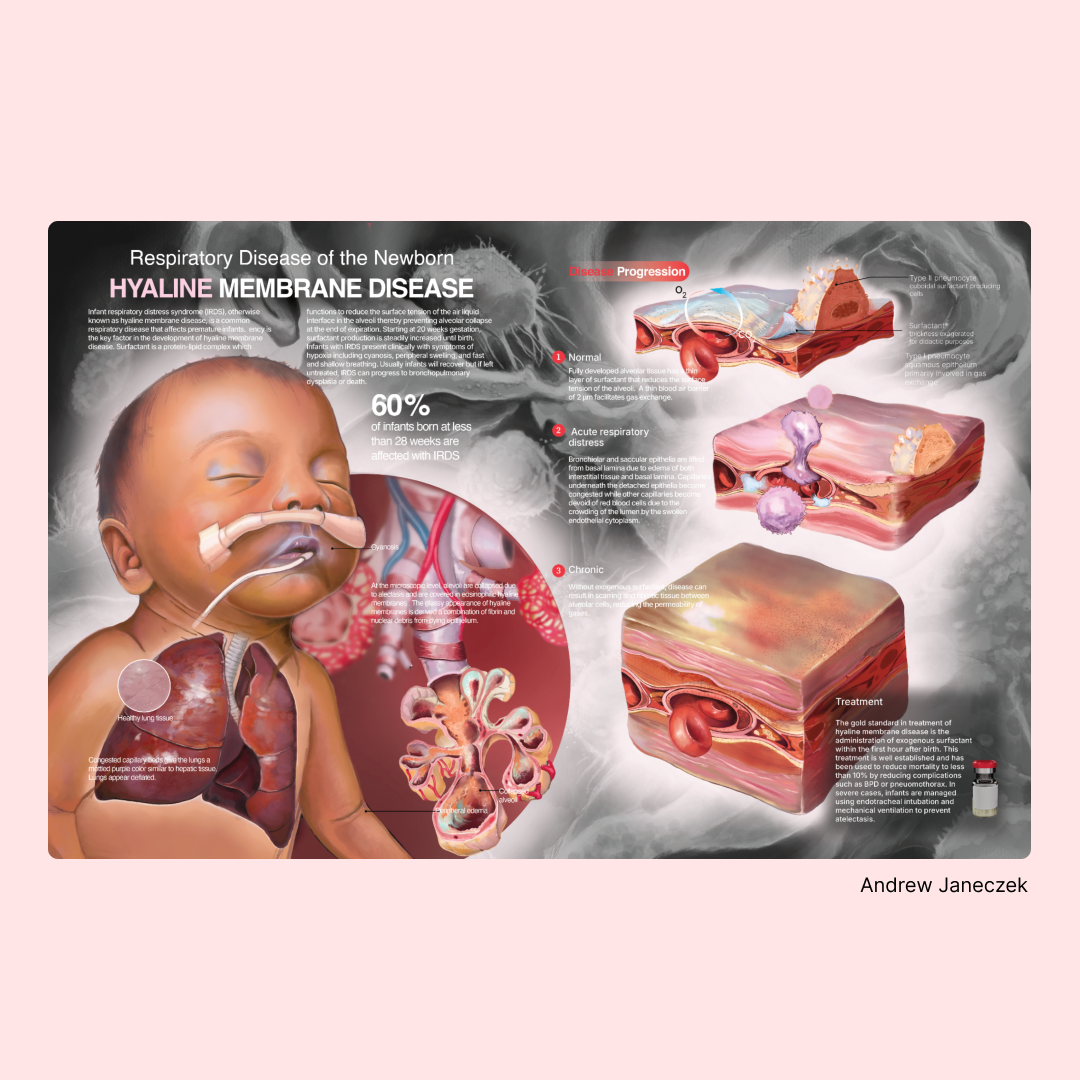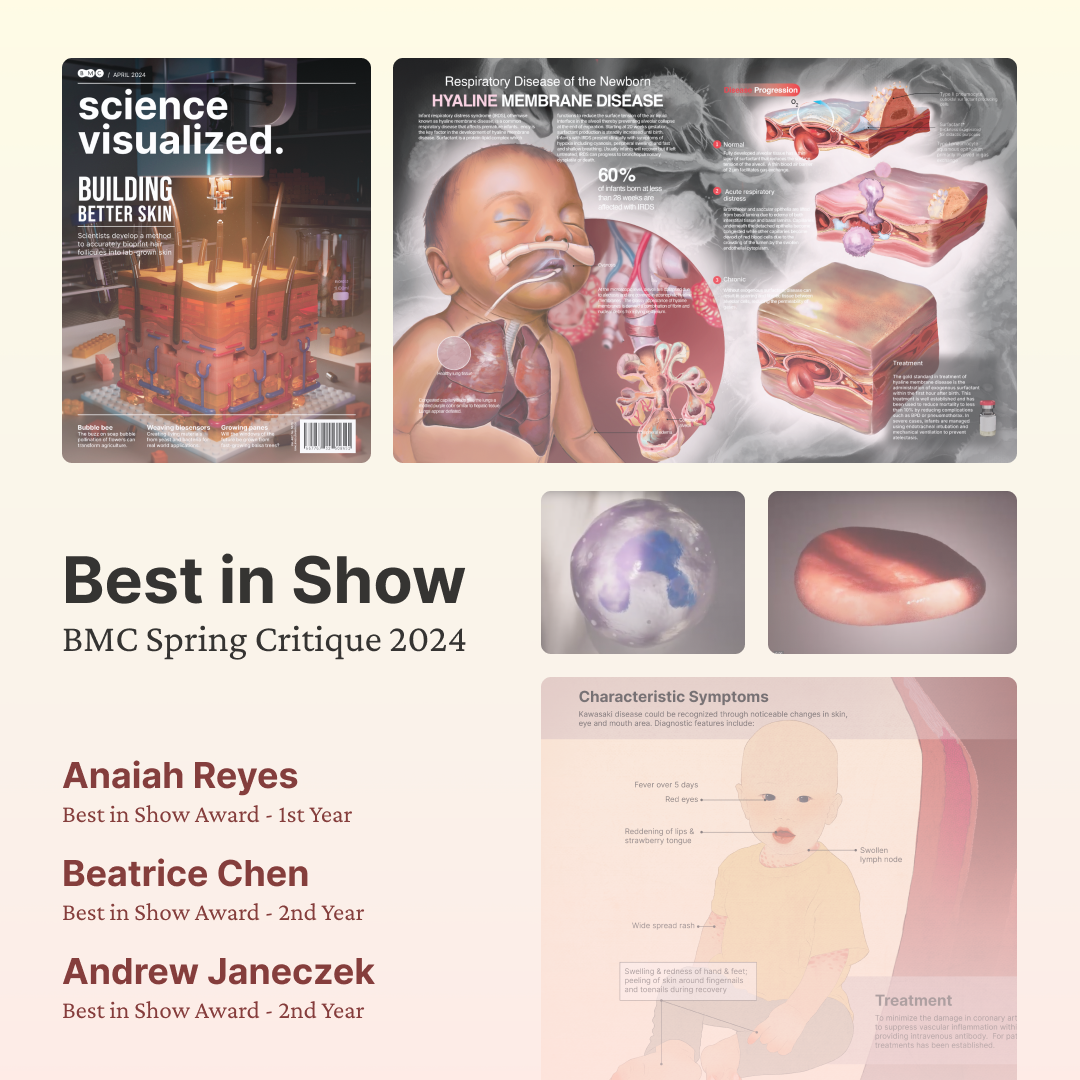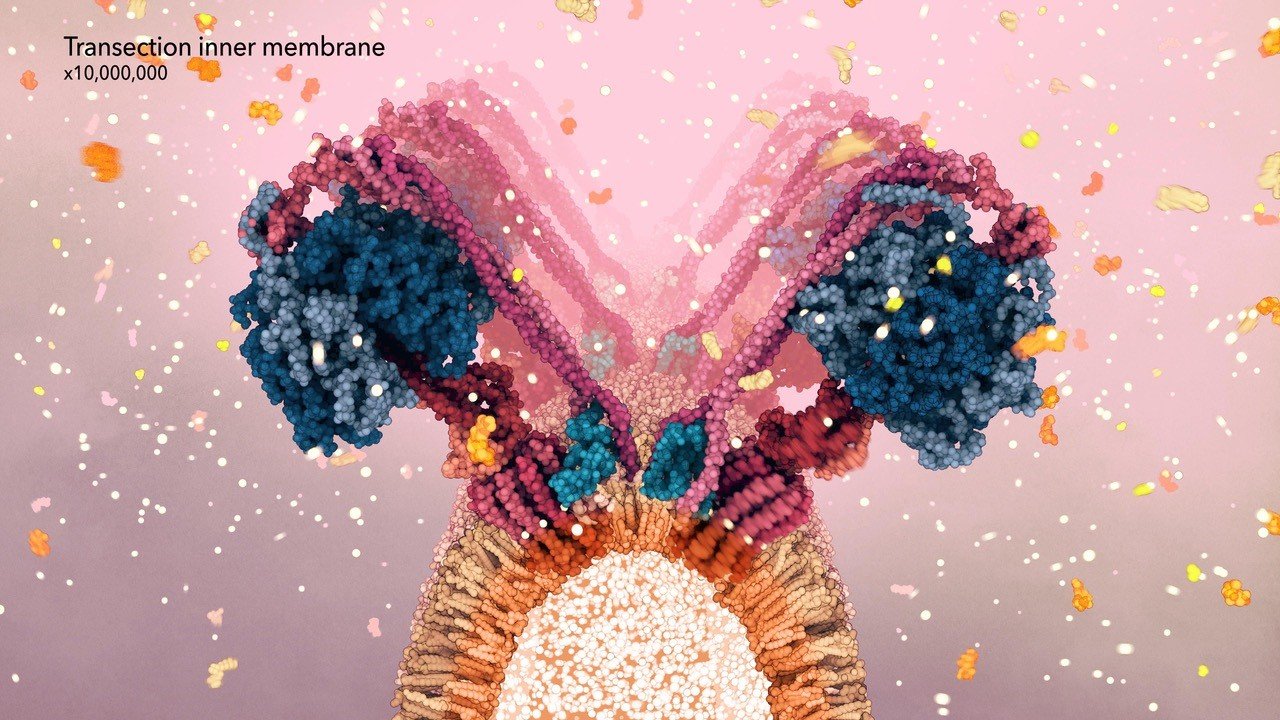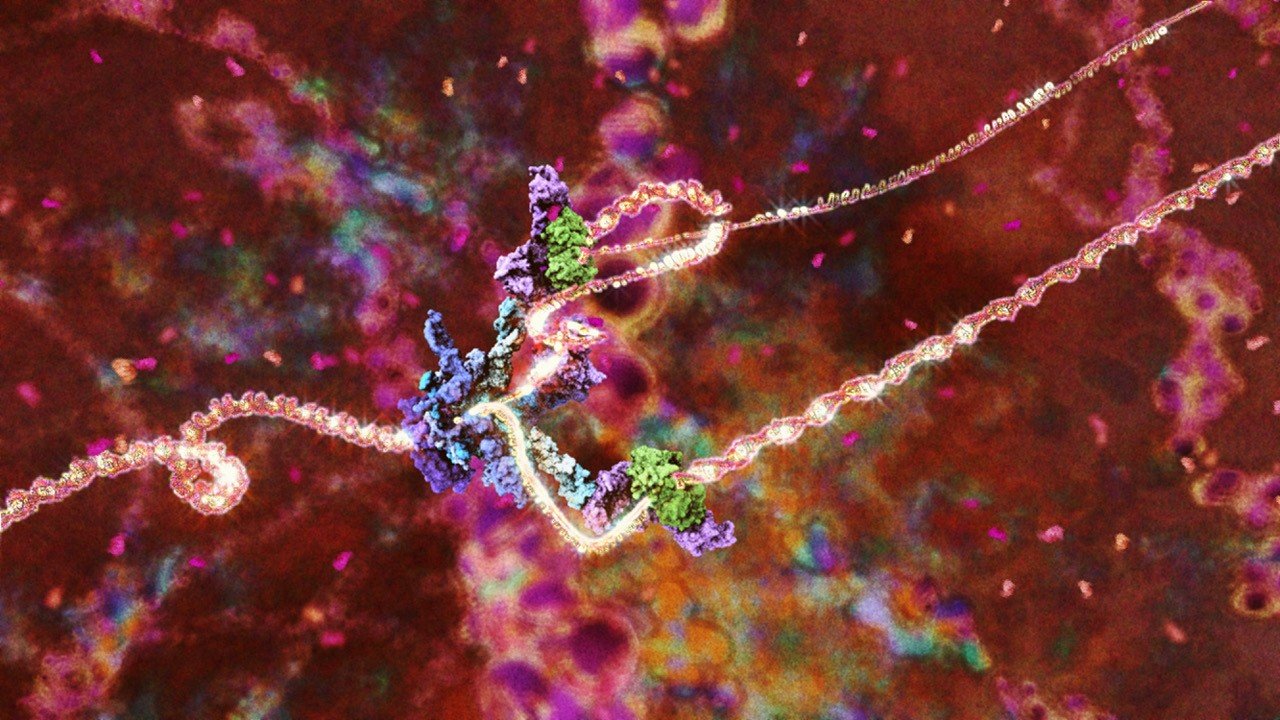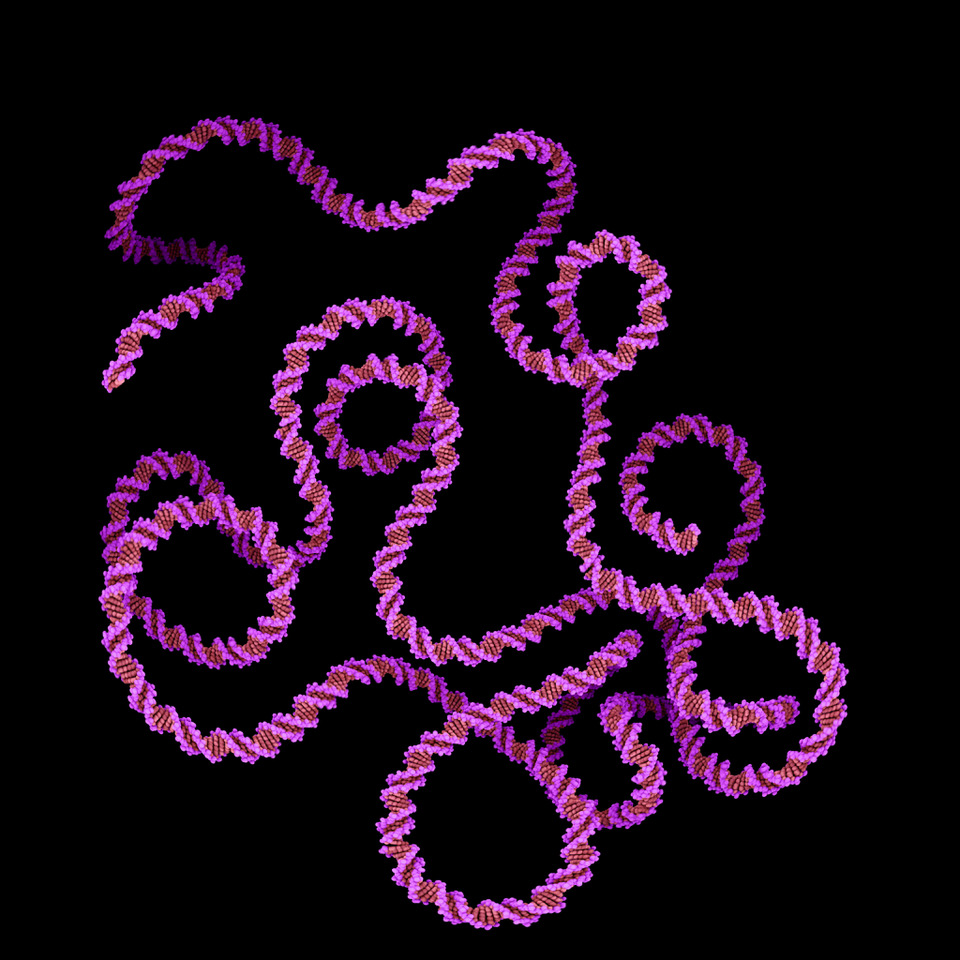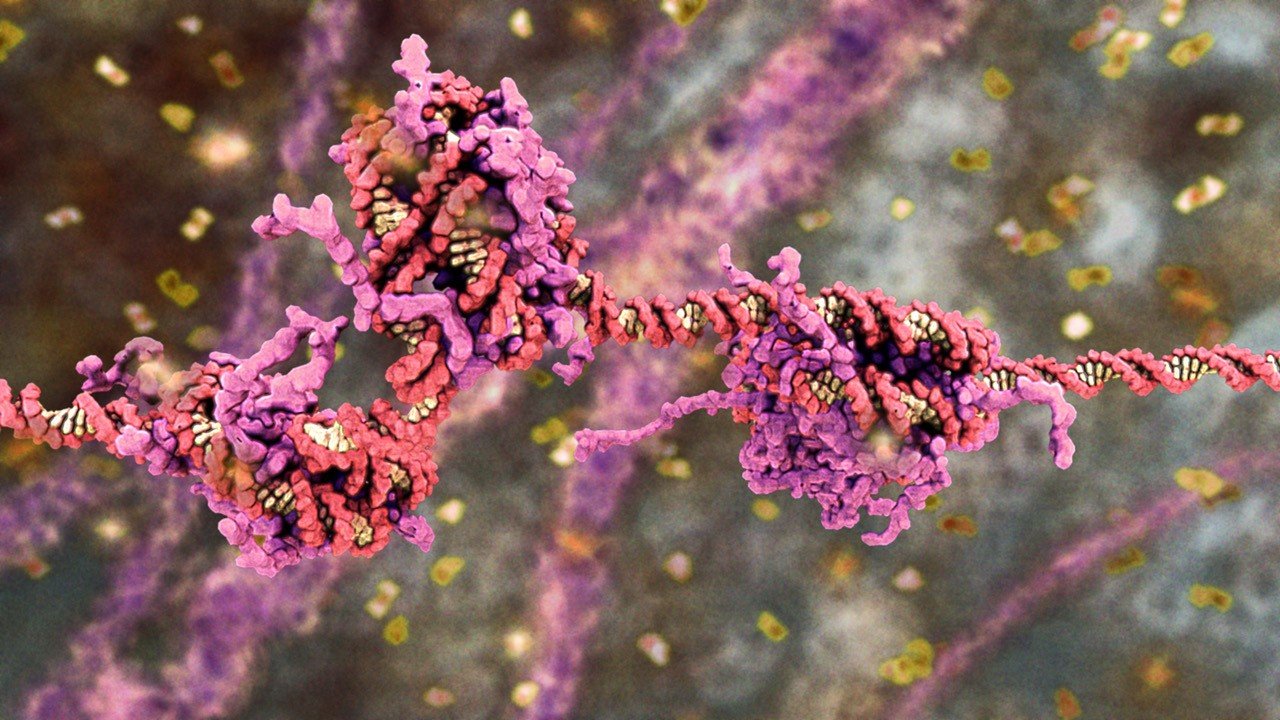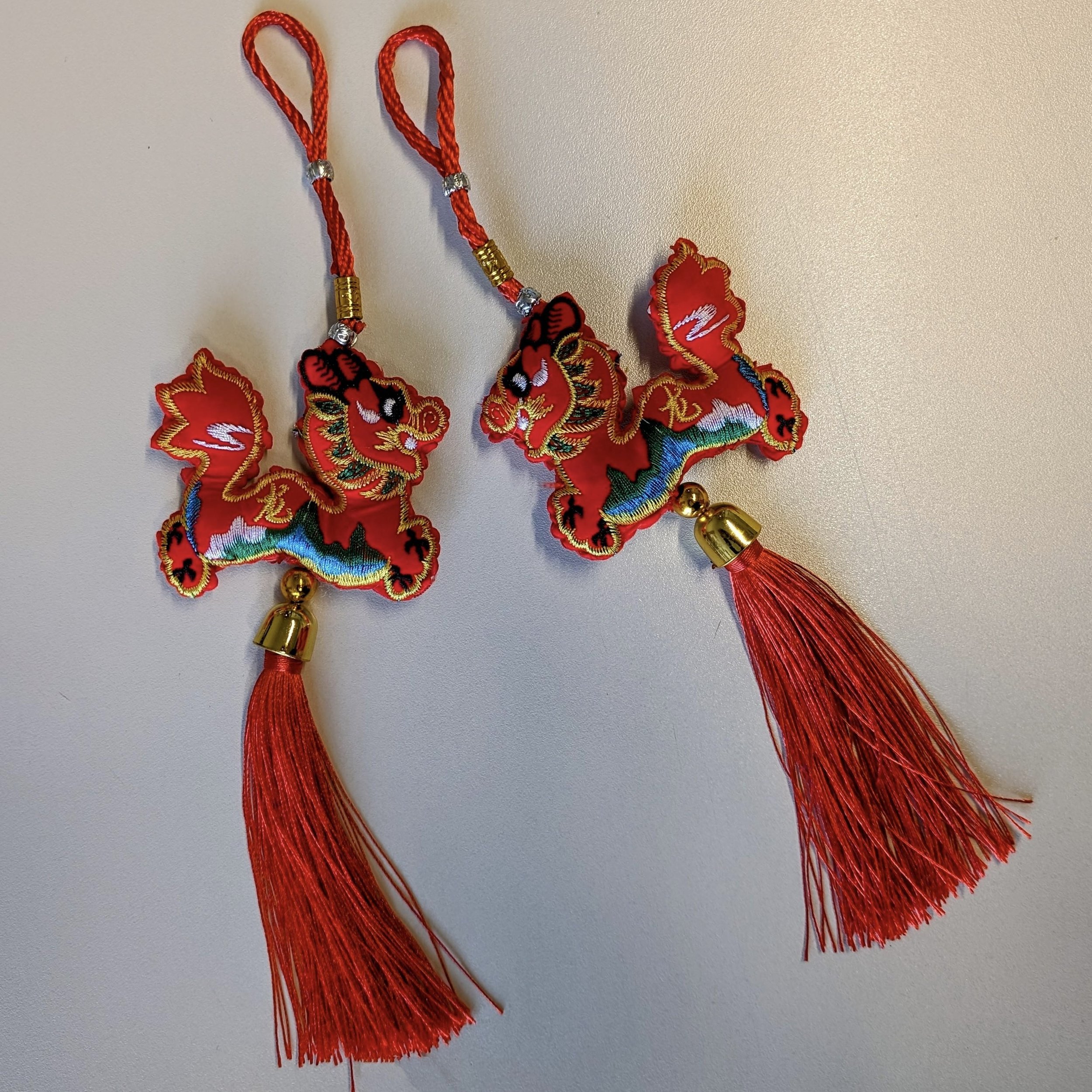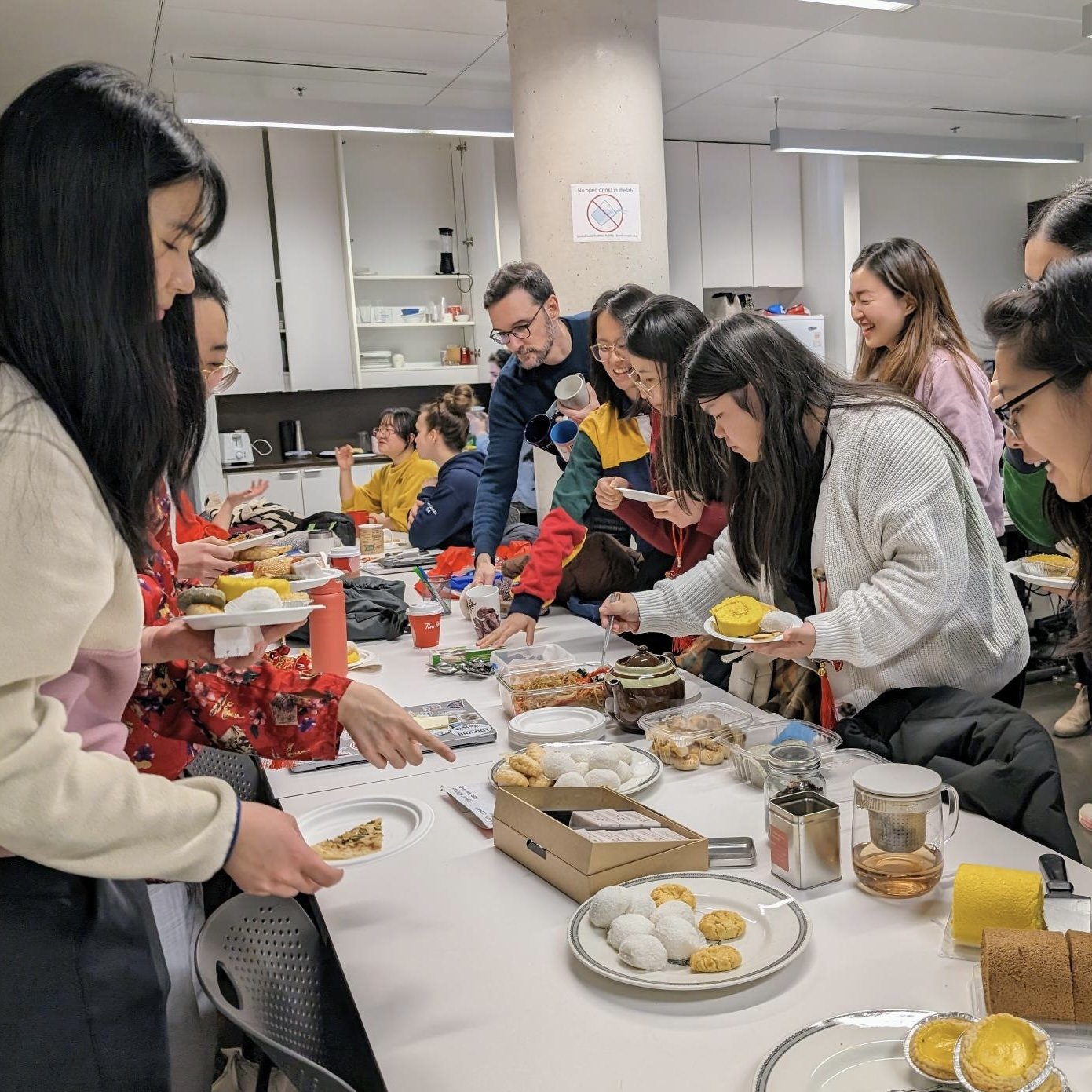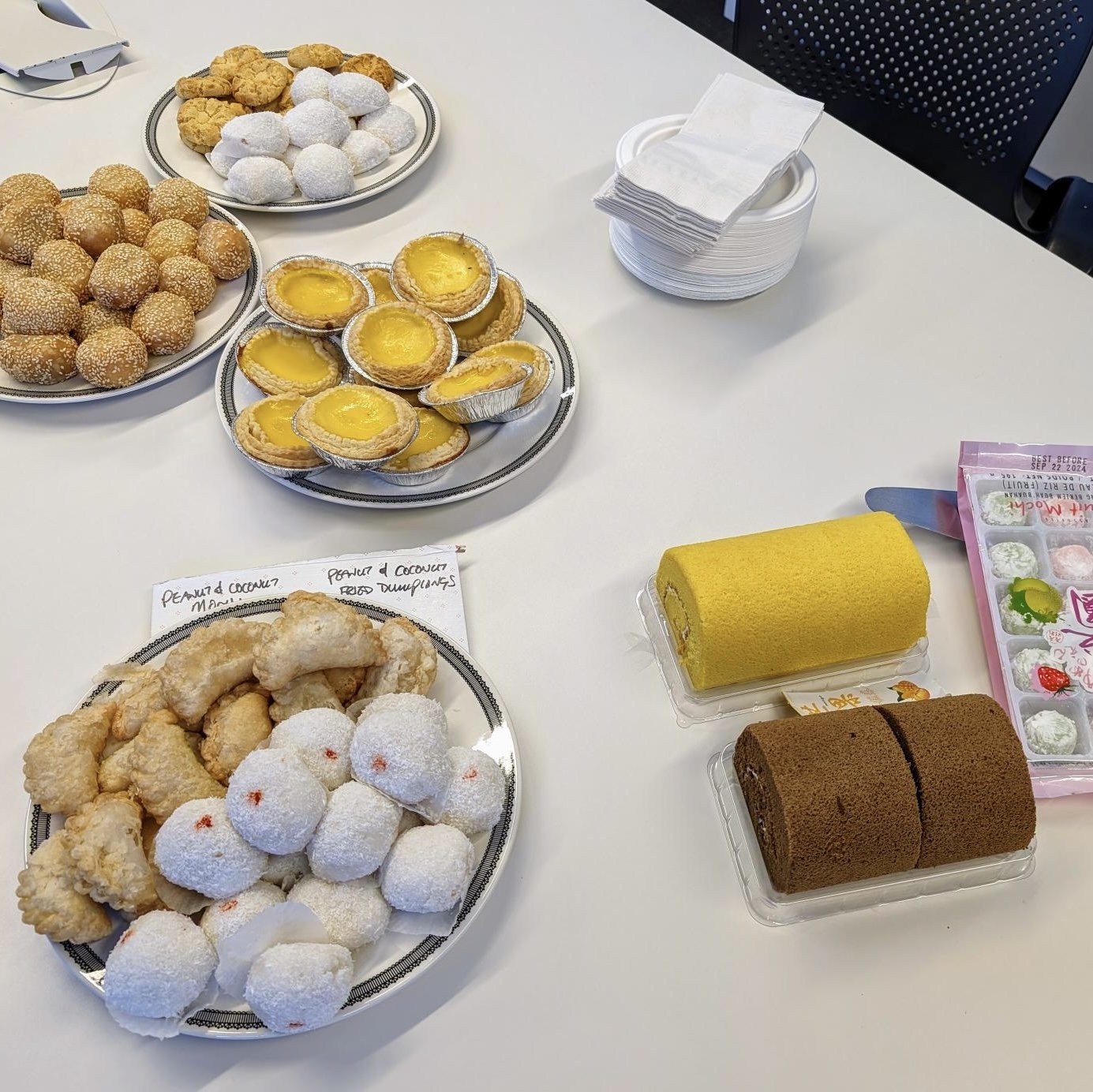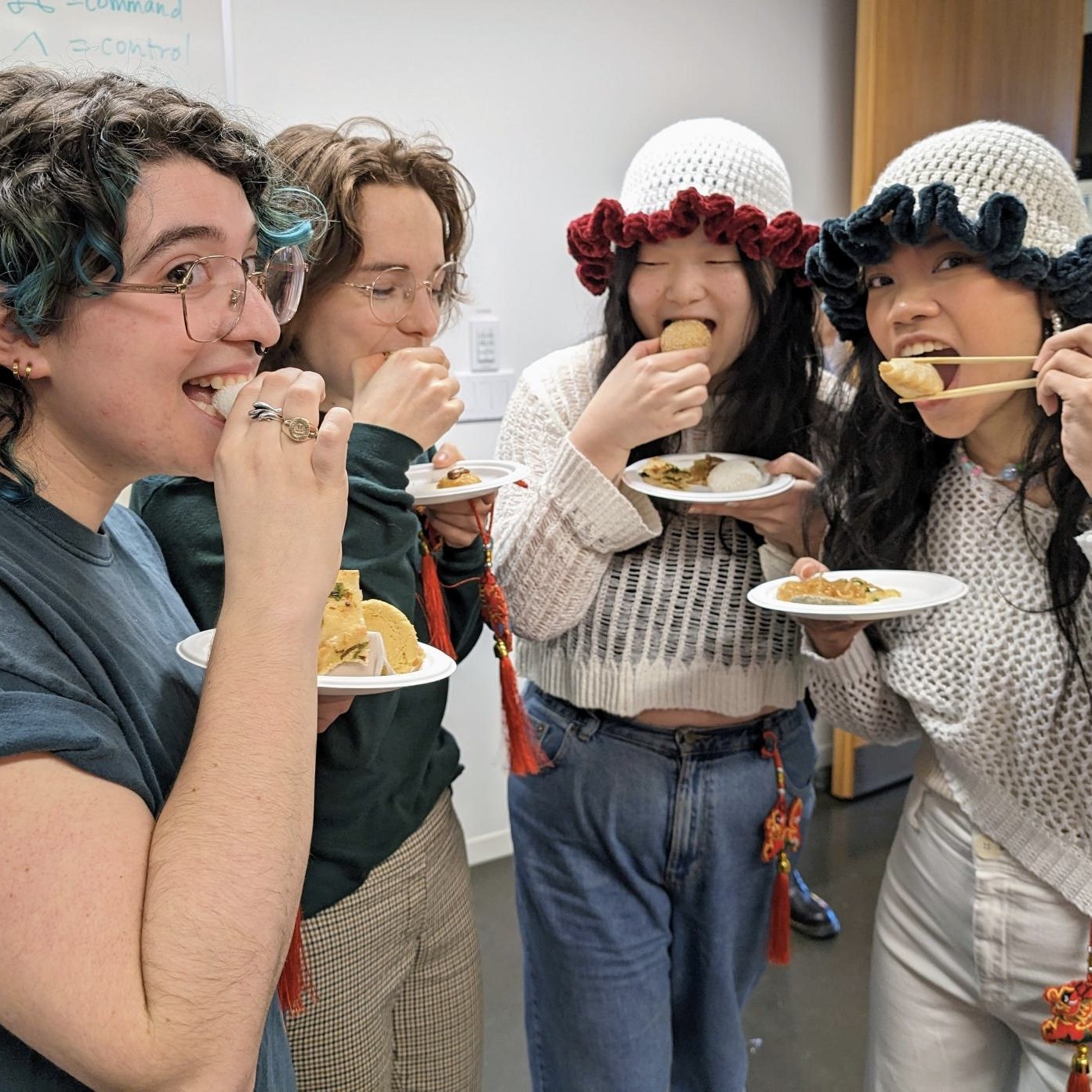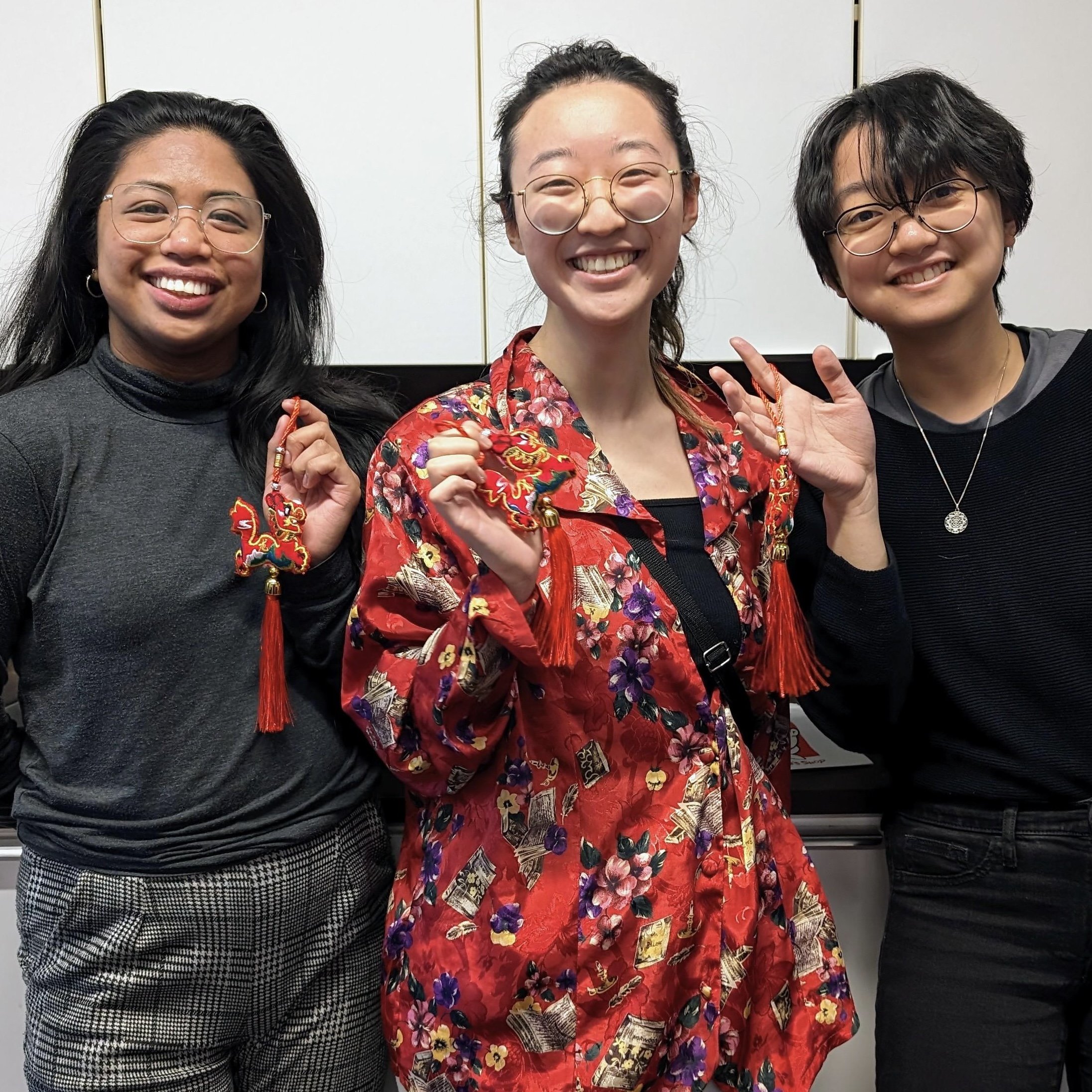Collage of visualizations from Spring Critique 2024 Best in Show awardees Anaiah Reyes, MScBMC ‘25, Beatrice Chen, MScBMC ‘24 and Andrew Janeczek, MScBMC ‘24.
This past Wednesday, April 17, the first and second year students, biomedical communications faculty, and guest judges, gathered to review student work completed over the winter semester.
Spring Critique is a professional development opportunity where students give and receive constructive feedback on their work–valuable preparation for interacting with clients in industry.
After a morning of reviewing student showcases, attendees voted to name Year I and Year II student showcases the Best in Show. As chosen by their colleagues, Year I's Best in Show was awarded to Anaiah Reyes, MScBMC '25. Beatrice Chen and Andrew Janeczek, both MScBMC '24, tied for Year II's Best in Show.
Thanks to our guest judges Brittany Cheung, MScBMC '21, Professor Emerita Margot Mackay, BScAAM '68, and Michie Wu, MScBMC '22.
Congratulations to our winners and to all our students on the successful completion of the winter semester!
~
Web sites referenced
Beatrice Chen’s online portfolio http://beatricenjc.weebly.com
Andrew Janeczek’s online portfolio https://www.andrewjaneczek.com
Anaiah Reyes’ Instagram https://www.instagram.com/areyes_visuals/
